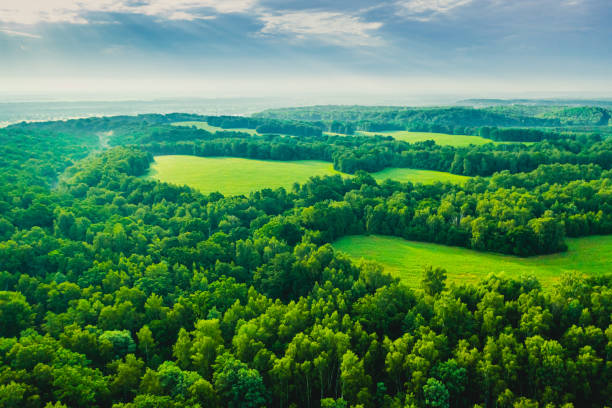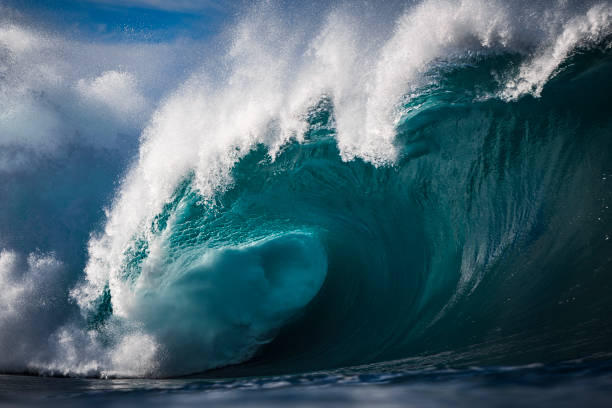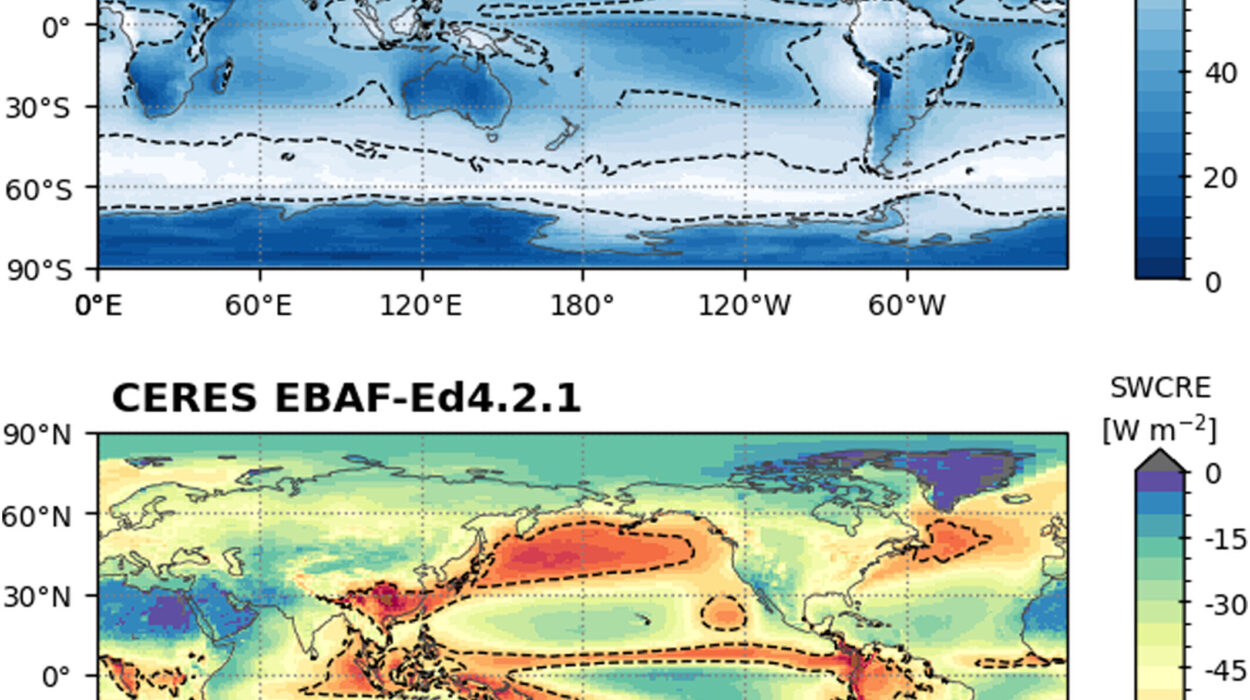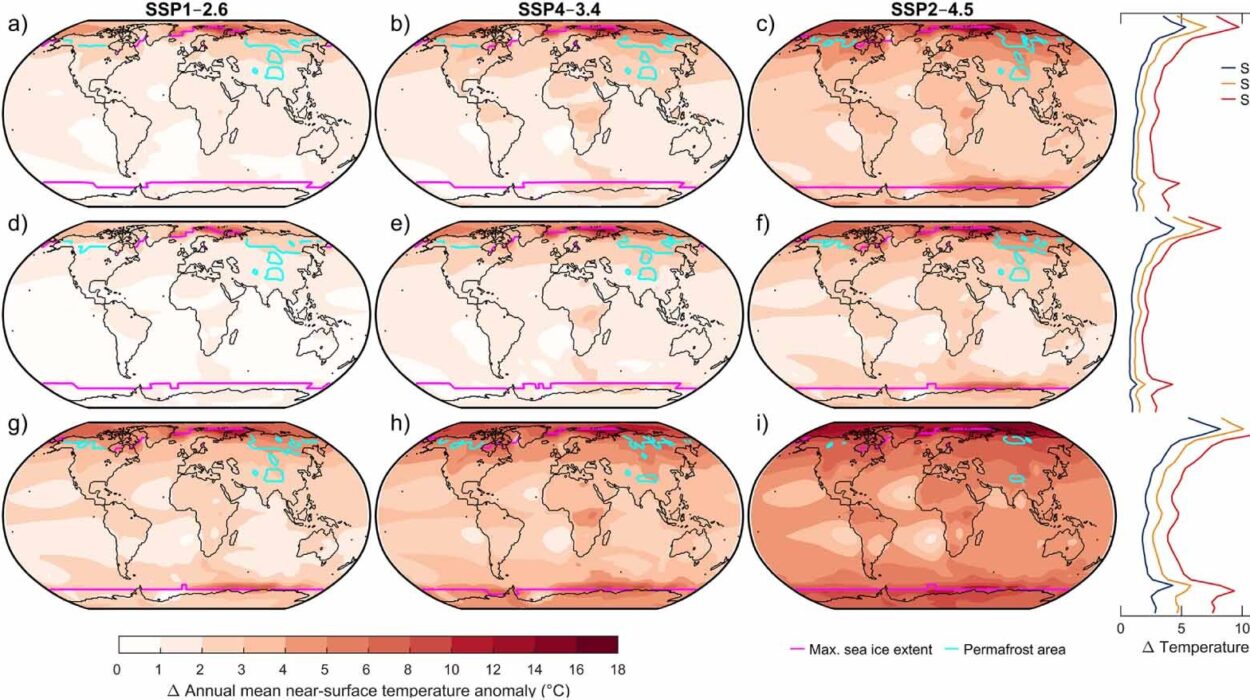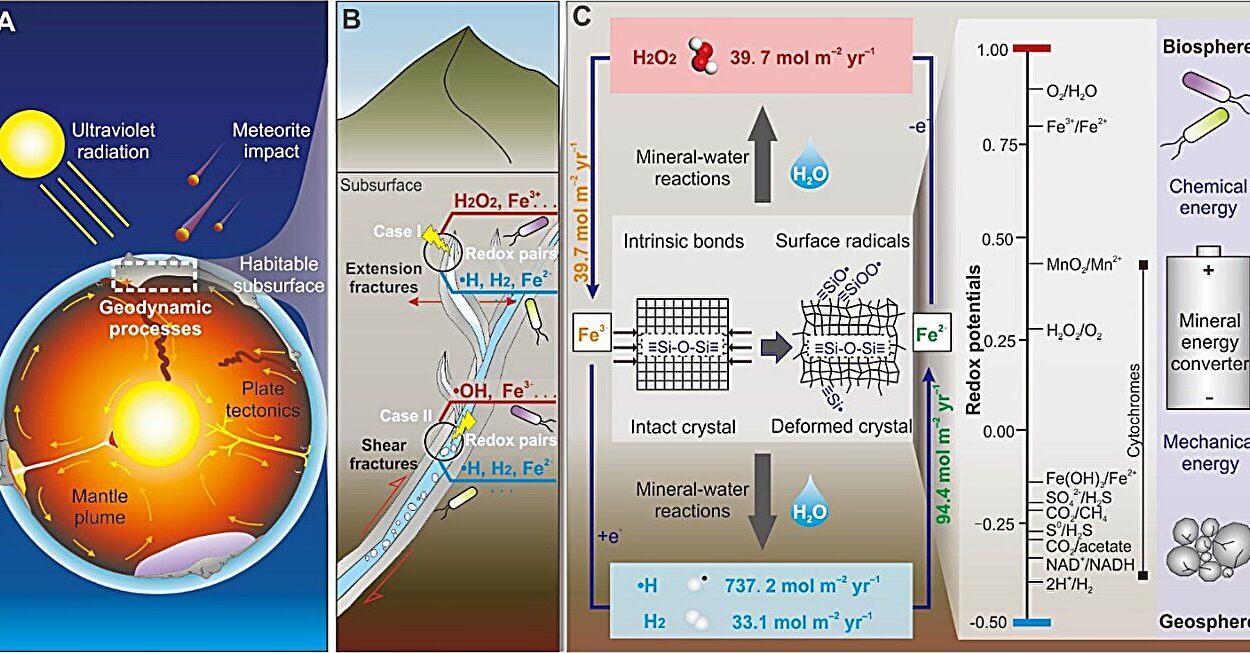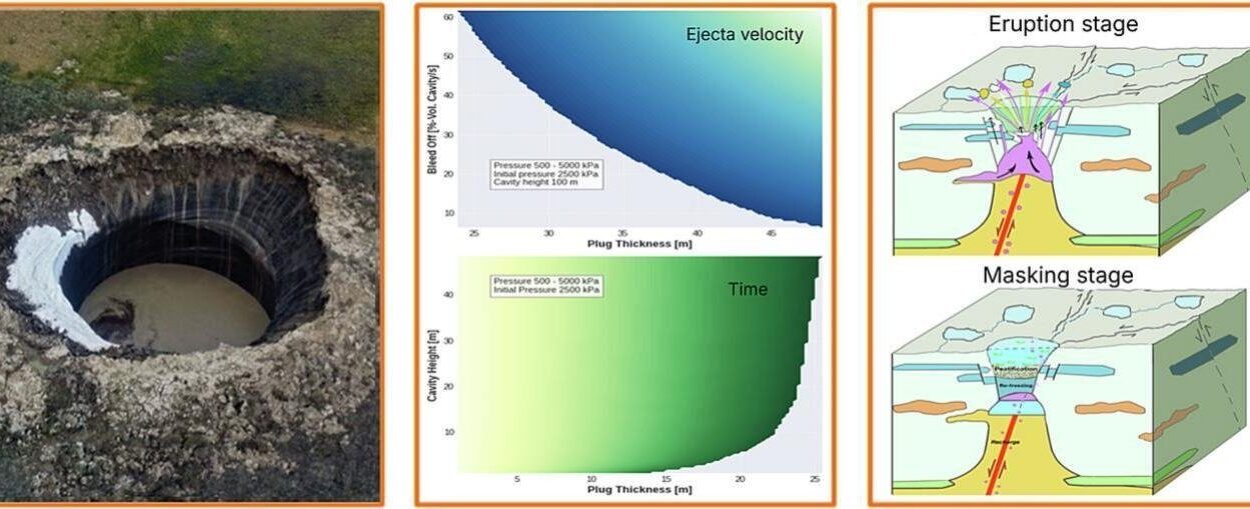The story of our world begins not with the rise of civilization or the forging of continents, but with something far older, more elemental—water. It is the blood of Earth, cycling endlessly through clouds, rivers, oceans, and soil. The water cycle, also known as the hydrological cycle, is not just a background process; it is the beating heart of the environment, pulsing life into every corner of the planet.
Step outside after a rainstorm. Feel the freshness in the air. Watch the water bead on leaves, soak into the soil, or trickle into streams. This moment is only a chapter in a tale that has been unfolding for billions of years. That raindrop may have once been part of a prehistoric sea, evaporated by the sun and carried halfway around the globe. In every storm cloud and morning dew, the Earth’s oldest recycler is hard at work—sustaining ecosystems, regulating climate, and shaping our world.
A Cycle with No Beginning or End
To truly understand how the water cycle affects our environment, we must step into the dance it performs. Water doesn’t stay in one place. It moves, transforms, returns, and repeats. It evaporates from oceans, lakes, and rivers, rising as invisible vapor into the atmosphere. There, it cools and condenses, forming clouds that eventually release their burden as rain, snow, or hail. The water lands and begins its descent—some rushing across the land as runoff, carving valleys and feeding streams. Some soaks into the ground, nourishing plants, refilling aquifers, and beginning a slow, hidden journey through layers of soil and stone.
The sun powers this cycle with gentle persistence, driving evaporation and transpiration—the process by which plants release water vapor into the air. Gravity pulls it back down, ensuring a balance that has persisted for eons. This endless loop doesn’t just move water—it carries life, redistributes energy, and shapes ecosystems with every pass.
The Invisible Threads Binding Ecosystems
Imagine a lush rainforest. Every drop of rain that falls has a mission. Some are intercepted by the thick canopy, some nourish the soil, while others fuel rivers that rush toward the ocean. Plants absorb water through their roots, releasing moisture back into the air through their leaves. This process helps form clouds that return the favor with another rainstorm, keeping the cycle in motion.
In arid landscapes, the water cycle plays a subtler but no less vital role. Here, even a brief downpour can spark explosions of wildflowers and feed migrating animals. These precious bursts of water dictate the rhythm of life. Without the water cycle, deserts would be lifeless voids instead of rich, if seasonal, ecosystems.
Freshwater wetlands—marshes, swamps, and bogs—are natural filters. They cleanse water as it slowly meanders through, trapping sediments and pollutants while supporting a wide array of life. Migratory birds, amphibians, and countless insect species depend on the specific hydrological rhythms that these habitats provide. Disrupt the water cycle, and the web of life unravels.
Climate’s Quiet Architect
Though we often think of water as something we drink or use, its far greater role is in regulating climate. Oceans, which cover over 70% of Earth’s surface, are massive heat reservoirs. Through evaporation and precipitation, they move energy around the globe. When warm water vapor rises and condenses into clouds, it releases latent heat, helping drive atmospheric circulation.
Rainfall patterns, monsoon cycles, and even hurricanes are all part of the water cycle’s grand choreography. Without it, the planet would be a far more hostile place. The equator would scorch under relentless sun, while the poles would remain frozen tombs. But thanks to this ceaseless motion of water, Earth’s climate zones are kept relatively stable—though not immune to disruption.
Clouds, too, are more than scenery. They reflect sunlight back into space, helping to regulate temperature. Their presence cools the Earth’s surface during the day and insulates it at night. Each puff of vapor drifting across the sky plays a small but vital part in Earth’s energy balance.
Water and Soil: A Deep Connection
Beneath our feet lies a hidden world, teeming with life and dependent on water. Soil is not just dirt; it’s a living matrix of minerals, organic matter, microorganisms, and air pockets, all intertwined with the water cycle. When precipitation falls, some water runs off into rivers, but much of it seeps into the soil, where it becomes available to plants and bacteria.
This infiltration not only nourishes roots but also maintains underground reservoirs called aquifers. These hidden lakes beneath the surface are a crucial part of the water cycle. They feed springs, keep wells full, and sustain rivers during dry seasons. Disruption in this balance—through overuse, pollution, or deforestation—can collapse entire ecosystems and lead to desertification.
Soil moisture also determines the fertility of land, impacting agriculture and food security. In drought-prone areas, even a small deviation in the water cycle can tip the balance between a healthy crop and widespread famine. The water cycle is thus inextricably tied to human survival.
How Forests Drink and Breathe
Forests, often called the lungs of the Earth, are also its sponges. They absorb and store rainwater, reducing flood risk and ensuring steady release into streams and rivers. The canopy intercepts rainfall, slowing its impact and allowing more to soak into the soil. Roots create channels for infiltration, while leaf litter helps retain moisture.
But forests do more than manage water. Through transpiration, trees release water vapor back into the atmosphere, helping to form clouds and drive local rainfall. This self-sustaining loop means that large forests can actually create their own climate. The Amazon rainforest, for example, generates much of its own rain through these processes. Deforestation disrupts this cycle, leading to drying, loss of biodiversity, and even changes in regional weather patterns.
Forests and the water cycle are locked in a mutual embrace. One cannot thrive without the other. Every tree cut, every acre lost, sends a ripple through the cycle that echoes far beyond its point of origin.
Rivers: The Arteries of the Cycle
Rivers are more than ribbons of water—they are the lifeblood of landscapes. Born from melting snow, spring-fed streams, or highland rainfall, rivers carry water across vast distances. Along the way, they shape valleys, support agriculture, deliver nutrients, and sustain cities.
The water that flows through a river is part of a dynamic exchange. Some evaporates, some infiltrates, some gets stored in lakes or used by communities. Eventually, much of it finds its way back to the ocean, where the sun’s warmth will call it skyward once more. In this way, rivers are not endpoints, but vital passages.
Yet they are also vulnerable. Dam construction, pollution, and overuse can alter flow patterns, increase evaporation, and reduce downstream availability. When rivers dry up or become contaminated, the consequences ripple across the environment—wetlands shrink, fisheries collapse, and agriculture suffers.
Oceans: Cradles of Evaporation and Memory
The vast blue expanse of the oceans is where most of Earth’s water resides. Here, the water cycle begins its journey anew each day. Solar energy causes evaporation on a massive scale, sending billions of tons of water vapor into the air. This vapor travels with the wind, condensing into clouds that eventually unleash rain on distant lands.
Oceans also absorb tremendous amounts of carbon dioxide, playing a vital role in regulating Earth’s climate. But warming oceans disturb this balance, increasing evaporation, intensifying storms, and shifting rainfall patterns. Sea surface temperatures, altered by climate change, now affect everything from drought frequency in Africa to hurricane strength in the Atlantic.
Moreover, melting polar ice and glaciers, part of the water cycle’s solid phase, are accelerating sea level rise. The water that was once locked in ice joins the cycle in liquid form, reshaping coastlines and displacing entire communities. The water cycle, once a slow and steady ballet, is beginning to lurch under the weight of human impact.
The Human Footprint on a Delicate System
For centuries, humans lived within the boundaries set by the water cycle. We built civilizations along rivers, prayed for rain, and feared drought. But in the modern age, we have become powerful enough to alter the cycle itself. Deforestation, urbanization, climate change, and pollution all leave fingerprints on the flow of water.
Cities paved with concrete reduce infiltration and increase runoff, leading to floods and depleted aquifers. Industries discharge pollutants into rivers and lakes, poisoning ecosystems. Agriculture, necessary to feed billions, withdraws more freshwater than the planet can replenish.
And then there is climate change—the great disruptor. As global temperatures rise, evaporation accelerates, snowpacks shrink, and rainstorms become more intense. The water cycle grows more erratic, swinging between flood and drought with alarming speed. Ancient rhythms are being replaced by turbulence.
Hope in Conservation and Science
Despite the challenges, hope is not lost. Around the world, scientists and conservationists are working to better understand and protect the water cycle. Rainwater harvesting systems, green infrastructure, reforestation projects, and smart irrigation are all part of a new toolkit designed to live in harmony with nature’s rhythms.
Restoring wetlands, protecting forests, and reducing carbon emissions are not just environmental goals—they are acts of survival. Educating communities, improving water use efficiency, and embracing traditional ecological knowledge can help heal the cycle. Each drop we save, each stream we clean, each tree we plant becomes a step toward restoring balance.
A Cycle That Touches Every Life
The water cycle is not just a scientific concept or a line in a textbook. It is the unseen thread that connects all living things. It shapes weather, sculpts landscapes, and supports every form of life. From the hummingbird sipping nectar in a rainforest to the farmer tending rice in a paddy field, from the child splashing in a puddle to the ancient glacier carving a valley—each is a note in the water cycle’s eternal song.
To understand the water cycle is to understand Earth itself. It is a story of renewal, of transformation, of connection. It reminds us that every action we take—every field we irrigate, every forest we protect, every drop we waste—matters.
And perhaps, in this understanding, lies our greatest strength: the ability to choose a future where water flows freely, cleanly, and kindly, as it has for billions of years. For when we care for the water cycle, we care for all life.

